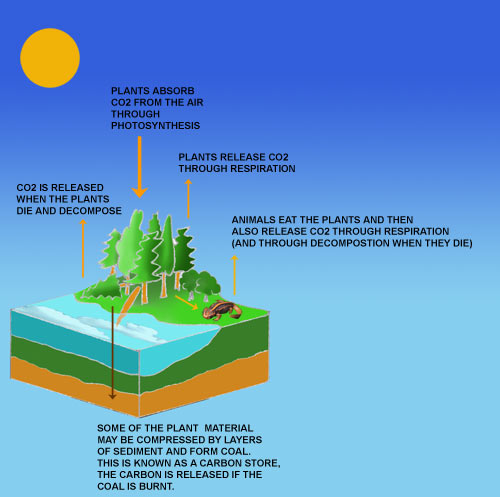Introduction to Fossil Fuels
Fossil fuels are produced from animals and plants that lived more than 300 million years ago. These fuels are mostly obtained in the form of deposits under the earth. Fossil fuels have chemical energy stored within them. When these fuels are burnt, the energy stored within them gets released and and can be used for various purposes. In fact, fossil fuels are currently used to meet around 85% of the world’s total energy requirements.

What are Fossil Fuels?
Fossil fuels were created by decomposing organic (plant and animal) matter a long, long time ago and are typically found underground. Different temperatures and pressures resulted in the organic matter transforming into coal, oil or gas. Fossil fuels are compounds made of carbon and hydrogen. Millions of years ago, these substances were the remains of plants and animals. As the plants and animals died, they were buried under sand and mud which stopped them from decaying. Over time, more sediment covered the remains. With additional heat and pressure, these remains slowly turned into coal, oil, and natural gas.
The forming of fossil fuels began with plants and the process that they use to gather energy from the sun, which is photosynthesis. This is why the sun is ultimately the main source of fossil fuel energy.
Types of Fossil Fuels
Fossil fuels provide the energy required for many household and industrial purposes today. Deposits of fossil fuels are found all over the world and deep inside the earth. There are quite a few types of fossil fuels. Here, we examine three main types which are widely utilized for energy production and other products: petroleum, coal, and natural gas.
Petroleum:
Petroleum is called a fossil fuel because it was made from the remains of plants and animals. The energy in petroleum came from the energy in the plants and animals. That energy came from the sun. Also called crude oil, the term petroleum encompasses multiple types of hydrocarbons, which are compounds consisting primarily of hydrogen and carbon but possibly contain other elements as well. Petroleum is buried underground in tiny pockets in rocks. People drill oil wells into the rocks to pump out the oil. The petroleum we use today was made millions of years ago.
Coal:
Coal has been mined for centuries and is one of the prime types of fossil fuels. It is cheap and the expertise and infrastructure to use it are already in place and are easily available. Although coal is perhaps the dirtiest of fossil fuels to extract and burn, it is still a popular energy source.
Coal forms from plants such as ferns, moss, and trees that lived near shorelines and in swamps and bogs millions of years ago. When these plants died, they were slowly covered with sediment. Over time, they were pressed deep into the earth where they were affected by mounting heat and pressure. Under these conditions, the organic matter becomes richer in carbon and hydrogen, and was increasingly deprived of oxygen.
Coal goes through various stages of development that are characterized by increasing carbon content. Coal containing higher levels of carbon burns cleaner than those with lower levels. The purest form of coal is graphite, which consists almost entirely of carbon.
Natural Gas:
Natural gas is generally considered a nonrenewable fossil fuel, and is formed mainly from the remains of plankton, a type of small water organism that includes algae. Natural gas consists mostly of methane. Due to its lower density, it is often found on top of deposits of petroleum and is extracted through the same process. However, deposits containing only natural gas also exist.
Natural gas can be hard to find because it is usually trapped in porous rocks that are deep underground. Geologists use many methods to find natural gas deposits, such as looking at surface rocks to find clues about underground formations. Natural gas should not be confused with gasoline, which is made from petroleum. Natural gas is desirable in part because it burns cleaner than coal and petroleum. Natural gas is commonly used in residential applications for home heating and has a myriad of other applications.
***
Want to know more about fossil fuels? Click here to schedule a live session with an eAge eTutor!
About eAge Tutoring:
eAgeTutor.com is the premium online tutoring provider. Using materials developed by highly qualified educators and leading content developers, a team of top-notch software experts, and a group of passionate educators, eAgeTutor works to ensure the success and satisfaction of all of its students.
Contact us today to learn more about our guaranteed results and discuss how we can help make the dreams of the student in your life come true!
